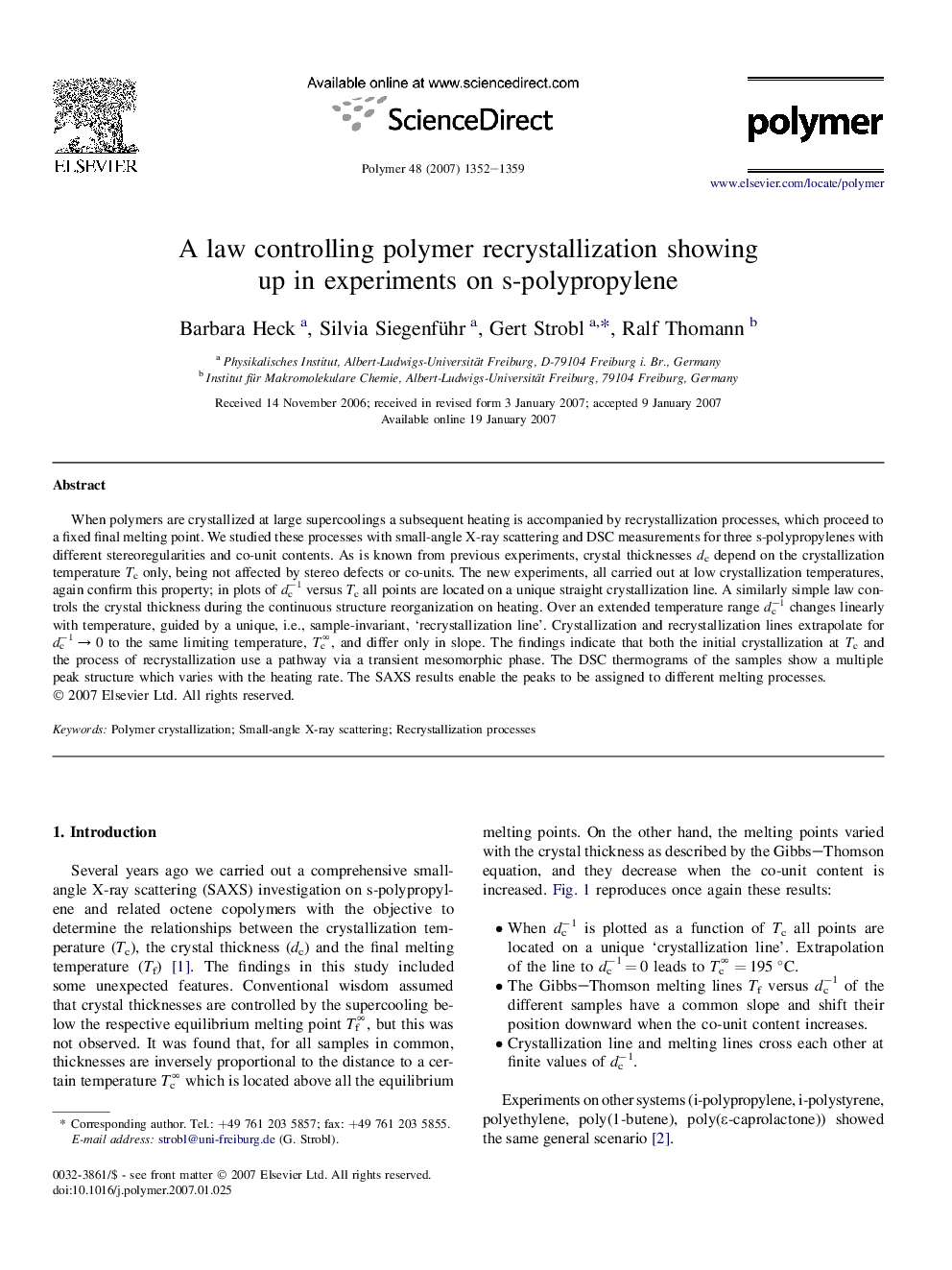| Article ID | Journal | Published Year | Pages | File Type |
|---|---|---|---|---|
| 5186133 | Polymer | 2007 | 8 Pages |
When polymers are crystallized at large supercoolings a subsequent heating is accompanied by recrystallization processes, which proceed to a fixed final melting point. We studied these processes with small-angle X-ray scattering and DSC measurements for three s-polypropylenes with different stereoregularities and co-unit contents. As is known from previous experiments, crystal thicknesses dc depend on the crystallization temperature Tc only, being not affected by stereo defects or co-units. The new experiments, all carried out at low crystallization temperatures, again confirm this property; in plots of dcâ1 versus Tc all points are located on a unique straight crystallization line. A similarly simple law controls the crystal thickness during the continuous structure reorganization on heating. Over an extended temperature range dcâ1 changes linearly with temperature, guided by a unique, i.e., sample-invariant, 'recrystallization line'. Crystallization and recrystallization lines extrapolate for dcâ1 â 0 to the same limiting temperature, Tcâ, and differ only in slope. The findings indicate that both the initial crystallization at Tc and the process of recrystallization use a pathway via a transient mesomorphic phase. The DSC thermograms of the samples show a multiple peak structure which varies with the heating rate. The SAXS results enable the peaks to be assigned to different melting processes.
